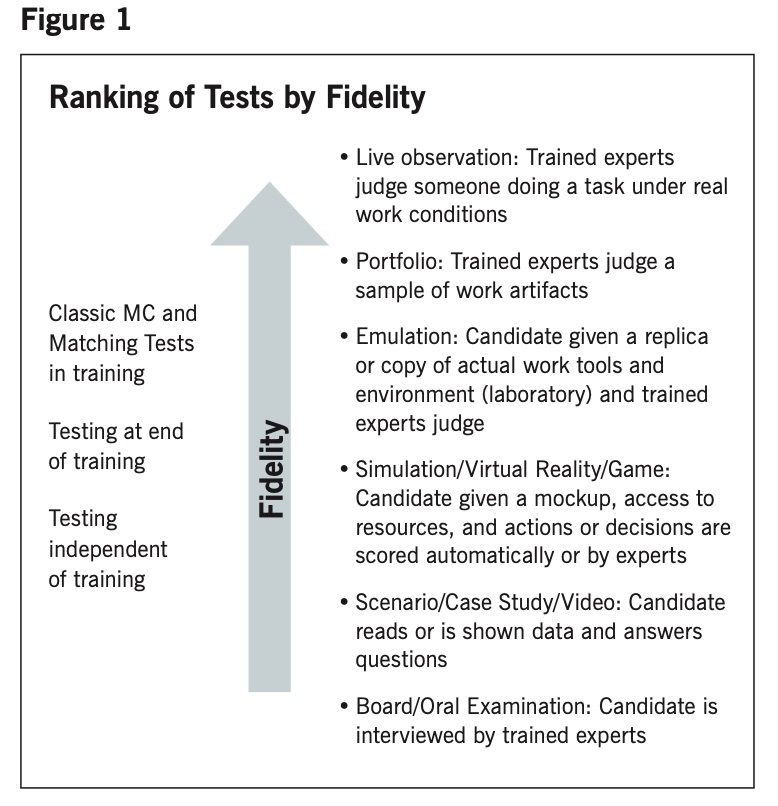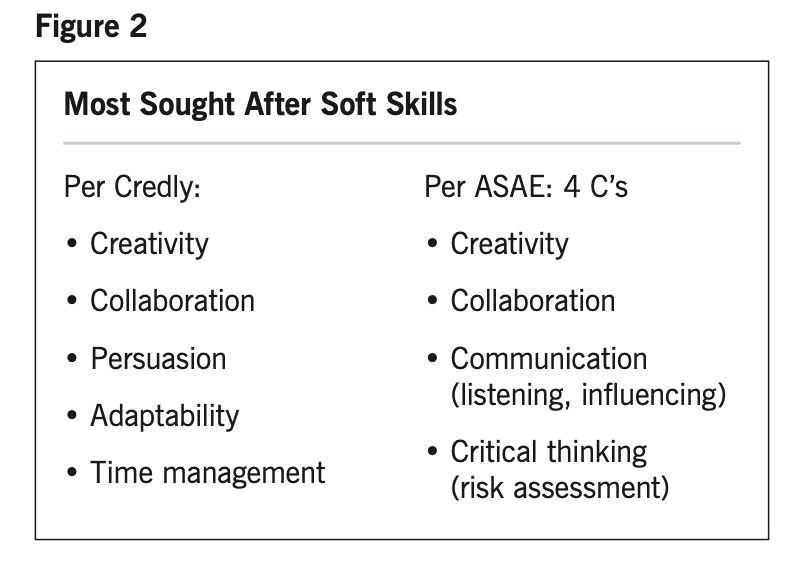Thinking of certifications as currency reflects their purpose better than thinking of them as passing a test or hanging a framed piece of paper on the wall. The term, “currency,” usually is thought of as legal tender used to purchase, acquire, or secure physical property. Currency also can buy influence, access to people and information, and open doors to opportunity. An address book becomes a form of currency when it contains the cell phone numbers and personal emails of the right people. Likewise, certifications become a form of currency when they attest to skills valued in the workplace, thus opening doors to job opportunities.
“…Certification has been a viable way to build one’s expertise…. turning to certification quickly gains a competitive edge.” (Anthony Carnevale and colleagues at the Georgetown Center for Education and the Workforce estimate the total number of certificates awarded from Title IV and non- Title IV institutions as roughly 1 million in 2010. See Anthony P. Carnevale, Stephen J. Rose, and Andrew R. Hanson, “Certificates: Gateway to Gainful Employment and College Degrees,” Center on Education and the Workforce (June 2012), https://cew.georgetown.edu/wp-content/uploads/2014/11/Certificates.FullReport.061812.pdf.)
Different forms of credentials exist, ranging from academic degrees to certificates. However, the rising demand is for certifications and micro-credentials with badges. According to Georgetown University’s study on education and the workforce, professional certifications are the second most common post-secondary award in the United States. The study stated more than 1 million certifications are awarded each year, and one-third of certificate holders have an Associate’s, Bachelor’s, or graduate degree.
The increasing use of certificates and certifications is reinforced by Credly, which issues digital certifications to people in 195 countries. The number of digital badges and certifications issued on the Credly platform by employers each year is higher than the number of degrees conferred annually in the United States. Every second of every business day, a digital certification is earned, verified, or used on Credly. Certifications with digital badges bridge the gap between higher education and employment requirements.
According to Dr. Ginger Malin, CEO of BadgeCert, microcredential badges are the fastest growing aspect of their digital badging business, because they offer organizations a meaningful way to recognize skills, competencies, and specializations beyond certification. As employers look for ways to differentiate between potential new hires, candidates who have demonstrated the desired skills and have the badges to prove it likely will find their resumes at the top of the heap.
Opening Doors
Just as the strength of a currency depends on its buying power, the strength of a certification depends on its ability to open doors to jobs and promotions. For certifications, strength comes from the fidelity of the assessment. Traditionally, certifications required you to pass a multiple-choice test to determine your recall and recognition of terms, rules, and procedures. The assumption is that the more you know, the higher the probability you can apply your knowledge appropriately on the job. Today, however, employers are looking for more assurance. They want confirmation you can really do tasks to their standard.
In her research on Generation Zers and Millennials, Lenora Knapp, Ph.D., found regardless of age, people want certifications specific to their work and with high fidelity. “Our national study found that real-time observation of performance on the job, hands-on skills testing, and documentation of work-related accomplishments were considered the most accurate means of evaluating work-related knowledge and skills. Multiple-choice and essay examinations were at the bottom of this list and were cited by only a small fraction of each generation.”
Live observation — watching you do the work while at work — is the ideal, but usually impractical. The next level is to submit a portfolio or a sample of your work for review by a qualified assessor, who uses a checklist or rubric to judge the efficacy of the work. Figure 1 below lists different types of assessments in terms of their fidelity.

Seeking People Skills
Another phenomenon is trending: Employers are looking for assurance you not only have technical skills, but soft skills — that is, people skills and critical thinking skills. Figure 2 lists the most sought-after soft skills based on research from Credly and the American Society for Association Executives (ASAE).

INC confirms the importance of soft skills its article, “This Is the Most In-Demand Skill of the Future,” published July 22, 2019. The top three skill sets listed are:
1. Problem solving, critical thinking, innovation, and creativity (37 percent)
2. Ability to deal with complexity and ambiguity (32 percent)
3. Communication (31 percent)
CDT and CFT Certifications
Knowing what soft skills employers want is not enough. The soft skills need to be defined operationally for the specific work context. For example, what does creativity look like in a hospital, restaurant, bank, auto repair shop, and so on? Probably not the same. One way to operationally define a skill is by describing the context, the behavior, and the criteria for judging the adequacy of the behavior when performed. This was done for both the Certified Facilitator of Training (CFT) and the Certified Developer of Training and Learning Methods (CDT) offered by the Center for International Credentials.
For the CFT, facilitation is defined as the discipline of presenting instructional content and executing learning tactics, while effectively engaging learners and managing group dynamics so learners’ attention is on comprehending, retaining, and mastering skills. The CFT recognizes that knowing the content is not enough to be an effective trainer. You also must be skilled in engaging learners and keeping the group focused on the goals of the program. To earn this certification, you submit one to three video tapes, for a combined maximum of 35 minutes. The assessors who judge your facilitation skills use rubrics that list the specific expected behaviors that give evidence of your ability to engage and manage group dynamics.
Likewise, the Certified Developer of Training and Learning Methods (CDT) recognizes knowing how to design and develop learning events is not enough. You must demonstrate ability to collaborate with peers and stakeholders in the design of methods that engage learners, enhance retention, and align with the context in which learners work. The CDT reflects another trend, the demand for personalization. The CDT allows you to select the type of method you want to use to demonstrate your skills; including serious learning games, labs and simulations, instructor-led workshops, synchronous and asynchronous virtual learning events, mobile learning, and more.
People who earn the CFT or the CDT get a certificate and a digital badge. The digital badge for the CDT is unique to your selected learning method. You can earn multiple badges for the CDT.
Badge Benefits
Why the interest in and demand for certifications with higher fidelity and digital badges? The badges:
- Validate your training skills and competence.
- Travel with you from job to job; they are portable.
- Bolster your credibility as a trainer, communicator, collaborator, and critical thinker — within your organization, with senior leaders and your manager, with your learners, and your peers.
- Help establish your personal brand.
- Boost your way up the career ladder.
- Enhance your hire ability.
- Foster a continuous learning mindset as you maintain your credentials by learning about the newest advances in training.
Remember, Training Matters. Why not pursue a certification that attests to your effectiveness and professionalism? To learn more, stop by Training magazine’s booth at or visit www.HaleCenter.org.
Where to learn more: The Complex Universe of Alternative Postsecondary Credentials and Pathways. Jessie Brown and Martin Kurzweil, Ithaka S+R. © 2017 by the American Academy of Arts & Sciences. All rights reserved. ISBN: 0-87724-113-9. This publication is available online at https://www.amacad.org/cfue
Judith Hale, Ph.D., CPT, is the CEO of the Center for International Credentials (Center). Author of nine books on consulting, measurement, and credentialing, she specializes in performance-based certifications for corporations and professional and trade associations. Her Center now offers two performance-based certifications for training professionals — the Certified Facilitator of Training (CFT) and the Certified Developer of Training and Learning Methods (CDT). For more information, visit: www.HaleCenter.org or e-mail Judy@HaleCenter.org

